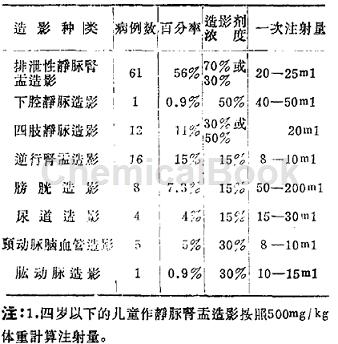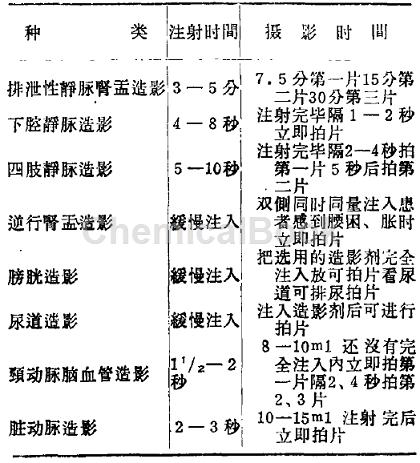Background and overview[1]
The scientific name of acetoiodobenzoic acid is 3-acetamido-2,4,6-triiodobenzoic acid. White crystal powder. Molecular weight 556.91. Melting point 278~283℃. Dissolved in water. Mainly used as a medical contrast agent, suitable for renal pelvis, urethra, bladder, and cardiovascular imaging. It is derived from the acetylation of sodium 3-amino-2,4,6-triiodobenzoate.
Clinical use[2]

Note: 1. For children under four years old who undergo seed pulse pyelography, the intravenous injection dose is calculated based on 500mg/kg body weight.
2. When the contrast agent concentration is required to be lower than the original, it can be diluted by 70% or 30%.
3. The injection dose of retrograde brachial pyelography is 8-10ml, which is the number of unilateral doses.
Injection time and photography time[2]
Due to different clinical requirements and purposes, the injection time and projection time of various types of angiography are also different, and errors are often caused by improper control of injection time and photography time. The injection time and photography time of various angiography are now listed in the table:

Titration analysis method[3]
Simple titration analysis method of X-ray contrast agent sodium acetoiodate. Since pyridine can form a complex [Cu(CSH6N)2]2+ with CuSO4 in a relatively dilute aqueous solution, this complex forms a lavender crystalline precipitate with pyridine, and its composition is: Cu:I=1:2 (sodium acetate can promote the precipitation of this precipitate). According to this, the excess CuSO4 is titrated with EDTA-ZNa, and the content of I can be calculated from the number of milliliters consumed in the reaction between the CuSO4 solution and I. The reaction is as follows:

Experimental operation: Accurately weigh a sample solution containing 13.4 to 4.0 grams into a 10 ml volumetric flask, dilute to the mark with distilled water and shake well (Liquid A). In addition, accurately draw 10 ml of 0.1 MCuSO4 solution into a 50 ml volumetric flask, and add pyridine (about 8 drops) dropwise while shaking until the precipitate is completely dissolved. Add 0.2~0.5 grams of sodium acetate and shake carefully to dissolve (be careful not to foam). Accurately weigh 10 ml of liquid A, shake vigorously to precipitate (about 5 minutes), and leave it for 20-25 minutes. Add water to the mark, mix, filter, and discard the initial filtrate. Accurately draw 25 ml of the continued filtrate, add 10 ml of acetate buffer (pH 4.7) and 5 to 6 drops of xylenol orange indicator, and titrate with 0.05MEDTA-2Na until it is bright green (1 ml of 0.1 MCuSO4 solution is equivalent to 0.1158 g I). This method is used to determine the content of I injection (30%) with good precision and accuracy.
Main reference materials
[1] Concise Dictionary of Fine Chemicals
[2] Clinical application of sodium aceiodobenate injection
[3] Titration analysis method of sodium aceiodobenzoate solution

 微信扫一扫打赏
微信扫一扫打赏

